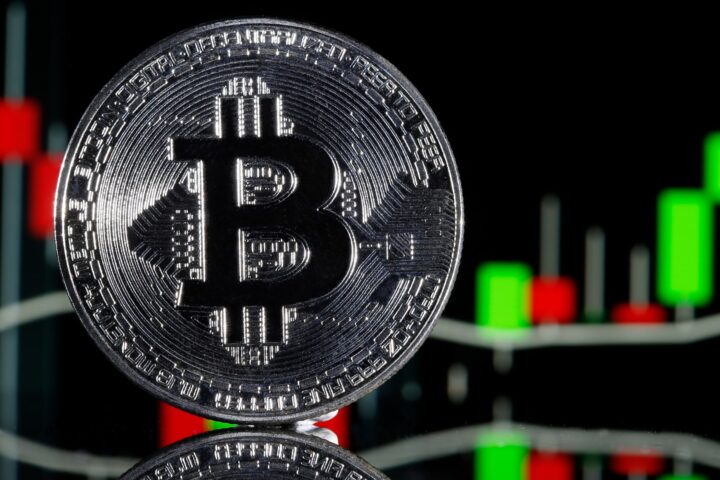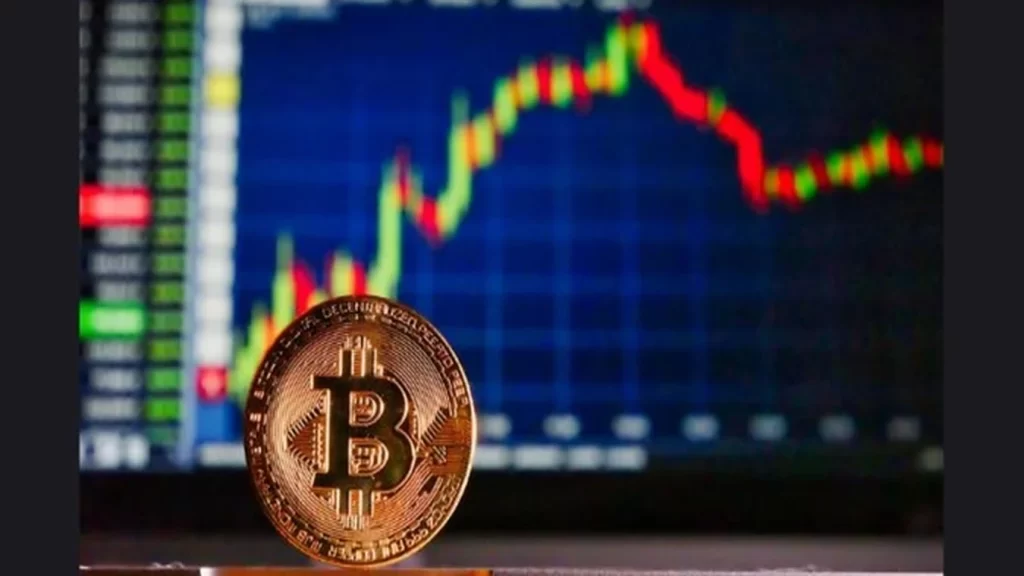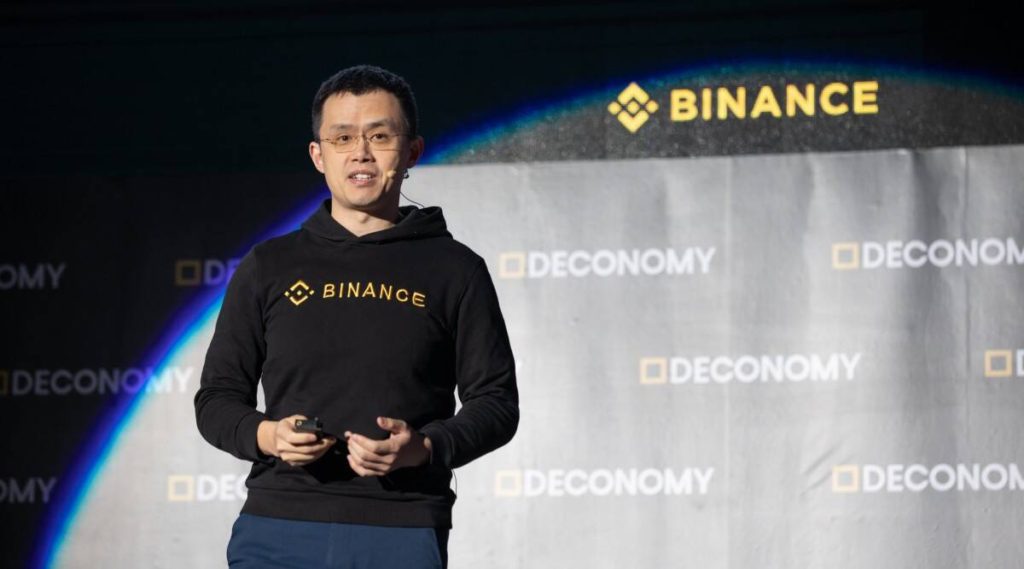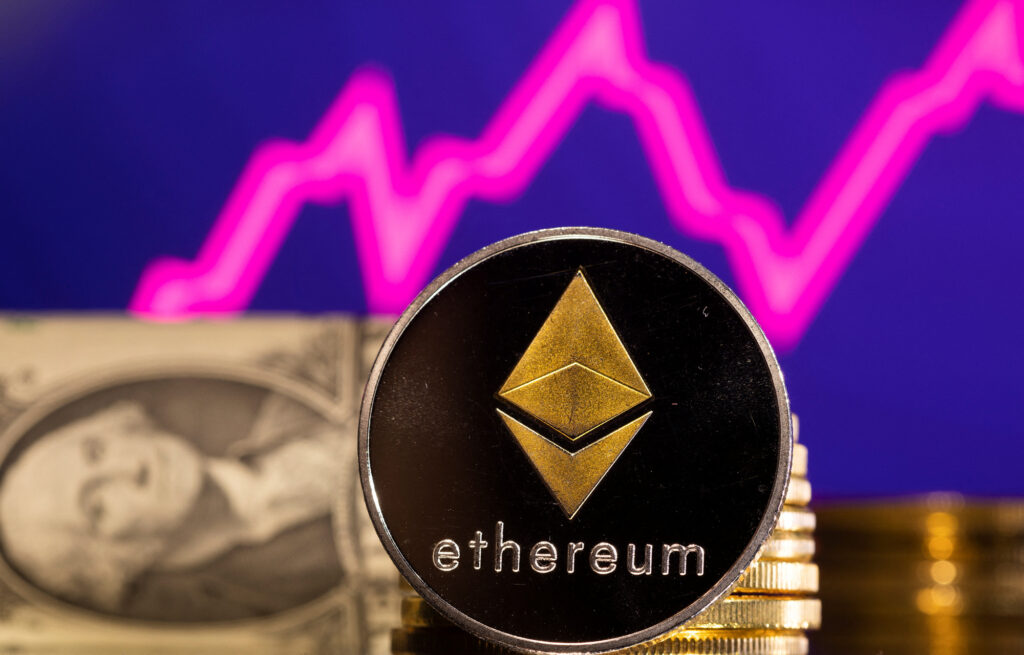Indexed Finance, an Ethereum-based project that faced a devastating $16 million hack in 2021, has emerged victorious in thwarting two recent hijacking attempts, paving the way for the return of control over the project’s decentralized autonomous organization (DAO) to its founders.
Their noble intention is to allocate the remaining treasury to those who fell victim to the 2021 breach.
Former core contributor Laurence Day took to X (formerly Twitter) to provide a comprehensive account of the valiant efforts made by the Indexed community in fending off these two hijacking endeavors, which targeted the DAO’s treasury containing approximately $120,000 worth of digital assets in NDX tokens.
The first hijacker, in a rather clandestine move, submitted a proposal without a title or description in an apparent attempt to evade detection.
However, Day and the vigilant community members rallied the Indexed DAO for votes against this nefarious proposal.
Although the attacker’s proposal came perilously close to approval within an hour, a sufficient number of “No” votes were cast to prevent its passage.
Recognizing the need to stay one step ahead, the Indexed DAO, fearing a potential copycat attack, swiftly approved a “poison pill” proposal.
This measure granted the DAO the authority to burn the remaining treasury funds if deemed necessary as a deterrent against future attackers.
READ MORE: Ethereum’s Resilience: Price Holds Above $2,000 Amidst Binance’s Regulatory Challenges
In the face of the impending second attack, the assailant initially sought to negotiate for a 50% share of the remaining treasury, as revealed in on-chain messages.
Indexed founder Dillon Kellar responded by proposing $10,000 worth of Dai while warning of the possibility of burning the entire treasury if the attacker persisted in their malevolent intentions.
As the clock ticked down with only four hours remaining until Kellar’s ultimatum, and despite an attempt by the attacker to counter-negotiate for $17,000, they ultimately acquiesced to the original offer and withdrew their malicious proposal.
Consequently, authority over the DAO will be reinstated to a multisig controlled by Day, Kellar, and the pseudonymous co-founder PR0.
Their immediate objective is to utilize the remaining treasury funds to compensate the victims of the harrowing 2021 hack.
Indexed Finance’s triumphant defense against these hijacking attempts not only preserves the integrity of the project but also stands as a testament to the resilience and dedication of its community and founders in ensuring justice for those affected by the past breach.
Bitcoin remained steady at around $38,000 as the week came to a close on November 26, bolstering the confidence of traders in the cryptocurrency’s price prospects.
Throughout the weekend, Bitcoin displayed its characteristic stability, with notable price fluctuations yet to materialize.
In recent days, Bitcoin had reached new heights not seen in 18 months, signaling positive indications for a potential upward trajectory.
Prominent trader and analyst Credible Crypto was among those who observed buyers effectively absorbing any selling pressure near the local price peaks.
With open interest in derivative markets staying relatively low and consistent demand for Bitcoin in the spot market, conditions appeared ripe for a potential upward movement.
Credible Crypto noted the potential for shallow dips in Bitcoin’s price due to the lack of open interest capable of triggering liquidation events, coupled with the evident demand at these price levels.
READ MORE: Montenegro Court Approves Extradition of Terraform Labs Co-Founder Do Kwon
Credible Crypto even suggested that his earlier prediction of a return to $36,900, a mere 2.1% drop from the current spot price, might not materialize as anticipated.
Another market analyst, Titan of Crypto, expressed optimism about Bitcoin’s immediate future. Using the Ichimoku Cloud indicator, Titan of Crypto identified a notable breakout in its key components, a rare occurrence in Bitcoin’s weekly chart.
The lagging span of Ichimoku, known as Chikou, which measures data from 26 weeks prior, was positioned above the price and at the top of the Kumo Cloud.
Furthermore, both Tenkan-sen and Kijun-sen exhibited a renewed uptrend, painting a highly promising picture for Bitcoin’s potential upward trajectory, according to Titan of Crypto.
Commenting on the price action, Titan of Crypto pointed out that recent weekly candles indicated resistance from bullish forces, as evidenced by the candle wicks pushing back against potential downward movement.
Overall, Bitcoin’s stability around the $38,000 mark, coupled with positive sentiment from prominent traders and analysts, suggested that the cryptocurrency market was poised for potential upward movement in the near future.
However, the actual direction of Bitcoin’s price remained dependent on factors such as market demand and open interest in derivative markets.
The governing body of the Cosmos Hub has approved a proposal to reduce the maximum inflation rate of its native token, Cosmos (ATOM), from 14% to 10%.
This decision aims to address concerns about the high inflation rate and its impact on the network’s security and token price.
As per the proposal, this adjustment would result in a decrease in ATOM’s annualized staking yield from approximately 19% to around 13.4%.
The Cosmos Hub serves as the primary blockchain within the Cosmos network, a interconnected system of blockchains.
ATOM tokens play a vital role in staking, governance, and covering transaction fees within the network.
The proposal faced a close vote, with 41.1% of votes in favor and 38.5% against.
Initially, it seemed likely to fail, but a last-minute surge in votes, along with some validators changing their positions, tipped the balance in favor of the proposal.
The proposal argued that the high inflation rate had led to overspending on security within the Cosmos Hub. It also contended that validators could still maintain profitability with a reduced inflation rate of 10%.
READ MORE: Australian Tax Regulator’s Cryptocurrency Tax Guidance Leaves DeFi Users in the Dark
The entity with the highest number of votes in favor of the proposal, Zero Knowledge Validator, took to X (formerly Twitter) to explain its support.
They stated that double-digit inflation was unnecessary for security and could undermine the long-term value of ATOM.
Moreover, it could discourage the use of ATOM in decentralized finance (DeFi) and other applications within the Atom Economic Zone.
On the opposing side, AllNodes, a validator, voiced its concerns on X.
They argued that the proposed change might negatively impact small validators and described it as “an abrupt, short-sighted, and ill-researched idea” that could disrupt retail and businesses engaged in building, trading, and validating ATOM.
Notably, the Cosmos Hub recently underwent an upgrade to introduce a liquid staking module.
This enhancement allows users to avoid the previous 21-day unbonding period when unstaking ATOM tokens.
Prior to this upgrade, ATOM holders had to wait 21 days before moving their funds after unstaking.
With the new module, staked ATOM can be utilized in the Cosmos decentralized finance ecosystem without compromising staking rewards, offering greater flexibility to token holders.
Investment managers in the United Kingdom are receiving regulatory backing to embrace blockchain technology for fund tokenization, a departure from traditional record-keeping practices.
A recent report from the Investment Association underscores the potential benefits of fund tokenization, involving the issuance of tokenized units or shares using distributed ledger technology (DLT).
This innovation is anticipated to usher in a more efficient and transparent financial industry.
Fund tokenization would introduce a real-time record-keeping system shared among all parties involved in servicing the fund.
This would result in reduced fund administration costs, simplified reconciliation processes, and faster settlement times.
Sarah Pritchard, the executive director of markets and international at the Financial Conduct Authority (FCA), emphasized the regulator’s openness to exploring innovative avenues while acknowledging the need to address potential risks.
She stated, “This is an exciting milestone and paves the way for exploring more transformative use cases in the future.
“We want to support firms to implement technological solutions which enhance and strengthen the UK’s asset management industry, while addressing risks and potential harms.”
The report also outlines key principles for the implementation of tokenized funds.
READ MORE: Ethereum’s Resilience: Price Holds Above $2,000 Amidst Binance’s Regulatory Challenges
These principles stress the importance of catering to both domestic and international investors, avoiding a narrow focus on the investment asset manager industry, and providing opportunities to a wide range of firms in the sector.
Additionally, the report calls for the creation of a delivery roadmap and a focus on enhancing competitiveness and efficiency within the sector.
It specifies that tokenized funds must be established in the UK, FCA authorized, and compliant with traditional financial industry standards, with no change in existing legal and regulatory rules.
The UK government has expressed its support for this blueprint model, signaling its commitment to fostering innovative approaches within the country’s asset management industry.
The government views this development as a positive step toward advancing technology’s role in asset management and as a testament to the UK’s openness to innovation.
This regulatory support coincides with recent reports of investment firms in the UK strengthening their digital asset divisions.
A significant number of asset managers and hedge funds in the US, UK, and Europe have hired senior executives to oversee digital asset strategies.
According to a survey, 24% of asset management firms have already adopted digital asset strategies, while an additional 13% plan to do so in the next two years, reflecting the industry’s growing interest in digital assets and blockchain technology.
Former Binance CEO, Changpeng “CZ” Zhao, is opposing the United States government’s attempt to prevent his return to the United Arab Emirates (UAE), where he wishes to be with his family while awaiting sentencing after pleading guilty to charges.
In a recent court filing dated November 23, Zhao’s legal team strongly urged a U.S. district judge to reject proposed changes to his bail conditions suggested by the U.S. Department of Justice (DOJ).
Zhao’s lawyers emphasized that he should be allowed to leave the United States and return to the UAE until his sentencing, scheduled for February 2024.
They made it clear that despite the potential 18-month prison sentence, Zhao has no intention of evading his sentencing in the UAE.
They cited Judge Tsuchida’s previous findings, which indicated that Zhao poses no flight risk and should be permitted to reside with his family in the UAE.
Furthermore, Zhao’s legal team argued that his actions, such as traveling from the UAE to the United States, demonstrate his intent to resolve the case and appear for sentencing.
They consider it illogical for him to take these steps if he planned to evade his responsibilities.
READ MORE: Hong Kong’s Hospital Authority Harnesses AI to Tackle Rising Superbug Threat
On November 22, U.S. prosecutors filed a court document suggesting that Zhao should not be allowed to leave the United States due to concerns about his potential flight risk.
The DOJ expressed concerns about the difficulty of ensuring Zhao’s return if he chose not to come back from the UAE for his sentencing.
However, a bond document submitted to the court on November 21 revealed that Zhao had posted a substantial $175 million release bond and committed to returning to the U.S. at least 14 days before his scheduled sentencing on February 23, 2024.
This development comes after Zhao’s agreement to step down as the CEO of Binance as part of his guilty plea to multiple charges brought by the DOJ.
While he will retain his majority stake in Binance, he is prohibited from holding an executive position within the crypto exchange.
It’s important to note that this agreement does not impact the ongoing litigation between Binance and the U.S. Securities and Exchange Commission, but it is expected to resolve the company’s issues with the Commodities Futures Trading Commission.
BitMEX co-founder Arthur Hayes has expressed his bullish stance on Bitcoin, offering insights on the cryptocurrency’s potential trajectory.
In a recent post, accompanied by a chart illustrating net reverse repurchase agreement (RRP) and treasury general account (TGA) balance changes, Hayes humorously referred to United States Treasury Secretary Janet Yellen as “Bad Gurl Yellen.”
Hayes urged fellow Bitcoin enthusiasts to maintain their focus, citing a notable increase in U.S. dollar liquidity.
He posited that Bitcoin’s price is likely to mirror the rise in dollar liquidity, potentially leading to an uptick in its value.
The provided chart showcases fluctuations in RRP and TGA balances, hinting at a potential correlation between heightened dollar liquidity and Bitcoin’s price.
In a parallel development, crypto analyst dharmafi offered more precise data points.
The post highlighted an RRP of $65 billion and a TGA balance of $35 billion, resulting in a substantial net liquidity surge of $106 billion since November 21.
As Hayes pointed out, this surge in liquidity reflects shifting dynamics within financial markets. Investors and Bitcoin enthusiasts closely monitoring these liquidity injections are anticipating potential repercussions for the cryptocurrency market.
READ MORE: Hong Kong’s Hospital Authority Harnesses AI to Tackle Rising Superbug Threat
While Hayes emphasized the connection between dollar liquidity and Bitcoin’s price movement, dharmafi’s data further underscores the impact of the liquidity surge.
The substantial increase in net liquidity since November 21 has raised questions regarding its potential effects on various asset classes, including cryptocurrencies.
In contrast to the enthusiasm expressed by Hayes and others in the crypto space, Janet Yellen, who has been a vocal skeptic of Bitcoin, recently issued a caution to cryptocurrency exchanges.
During a meeting of G20 finance ministers and central bank governors, Yellen emphasized the importance of compliance within the digital currency industry.
She underlined the necessity for cryptocurrency exchanges to adhere to regulations to operate within the U.S. financial system, reinforcing her commitment to maintaining regulatory oversight in the crypto sector.
This stance by Yellen reflects ongoing discussions and debates surrounding the regulatory framework for cryptocurrencies in the United States.
Azuki DAO, a decentralized autonomous organization linked to a nonfungible token (NFT) collection, has made significant updates, including a rebranding to “Bean.”
This transformation comes in tandem with the abandonment of a proposed lawsuit against Zagabond, the founder of the NFT collection, in relation to a contentious $39 million minting event.
The development was confirmed following a clarification statement from an Azuki DAO spokesperson.
In its new avatar as Bean, Azuki DAO has charted a course to become a memecoin project and integrate into the Ethereum layer-2 Blast ecosystem.
The transition has also been facilitated by a substantial infusion of funds, as Bean has secured $10 million from notable investors to support its growth and acceleration within the Blast ecosystem.
The forthcoming Bean memecoin will have a total supply capped at 1 billion tokens. Azuki DAO developers clarified that the previously displayed token distribution plan on their website is outdated.
READ MORE: Ethereum’s Resilience: Price Holds Above $2,000 Amidst Binance’s Regulatory Challenges
The updated allocation includes 50% of Bean tokens earmarked for the Azuki DAO community as part of an airdrop of Azuki series NFTs that concluded four months ago.
The remaining tokens are held in the project’s address. Furthermore, 40% of Bean tokens have been allocated to the Bean Treasury, while 10% are designated for Zagabond and remain in the project’s address.
The Azuki NFT collection comprises 10,000 anime-themed profile pictures (PFPs).
A second series of 10,000 PFPs called “Elementals” was introduced by Zagabond in June, which led to concerns over the resemblance between Elementals and Azuki PFPs, resulting in an oversupply and a 44% drop in Azuki NFT prices.
This event triggered a lawsuit proposal from the Azuki DAO community against Zagabond.
The developers of Bean have promised to share more detailed information about their financing and future development roadmap in the near future.
These changes mark a significant shift for Azuki DAO, now known as Bean, as it embraces the memecoin space and looks to thrive within the Blast ecosystem while settling its legal disputes.
CoinW, a prominent cryptocurrency exchange, has unveiled an exciting new partnership with the legendary soccer player, Andrea Pirlo.
The worlds of sports and cryptocurrencies share several common traits, such as passionate fan bases and a relentless pursuit of excellence.
Both industries are driven by innovation and the desire to break new ground.
It’s no surprise that crypto companies have become prominent sponsors in major sporting events, adorning stadiums, team jerseys, and fan tokens from the Super Bowl to Formula 1, the Premier League, and UFC.
However, this exposure alone does little to convey the values and principles of a crypto business to the masses.
To bridge this gap, trusted figures can play a pivotal role in introducing curious individuals to the possibilities and financial freedoms offered by digital assets.
Enter Andrea Pirlo, one of the greatest midfielders in the history of soccer, known for his impeccable ball control, precise free kicks, and creative genius.
Having left an indelible mark on the global soccer scene by playing for Inter Milan, AC Milan, and Juventus, Pirlo has seamlessly transitioned into coaching, dedicating his expertise to nurturing the next generation of soccer talent.
Now, at the age of 44, Pirlo has added another milestone to his illustrious career by becoming an ambassador for CoinW, a cryptocurrency exchange boasting over 10 million users worldwide, with ambitious plans for further expansion.
READ MORE: Australian Tax Regulator’s Cryptocurrency Tax Guidance Leaves DeFi Users in the Dark
CoinW’s desire to align with top-tier entities has led to several high-profile partnerships, including associations with La Liga and the prestigious Globe Soccer Awards Ceremony, which have introduced its platform to new audiences.
Pirlo himself is excited about the role, stating, “Being appointed as CoinW’s global brand ambassador is an honor, especially as we celebrate its sixth-year milestone.
I’m enthusiastic about our potential to drive impactful initiatives and introduce Web3 technology to sports fans worldwide.” The collaboration will also feature a high-profile video production.
For CoinW, this partnership signifies not just the presence of a well-known face in their advertisements but also a testament to their journey and progress over the years.
Sonia Shaw, CoinW’s President of Partnerships, describes the collaboration as a “vibrant celebration” that brings together the excellence of both CoinW and Pirlo in their respective domains.
Since its inception in 2017, CoinW has prioritized security, innovation, and user-centric services.
It offers a user-friendly interface, robust security measures, and a diverse range of tradable assets to cater to the needs of both novice and experienced crypto traders.
With a presence in over 200 countries and regions, CoinW is committed to fostering a global cryptocurrency trading ecosystem while maintaining strict compliance with Know Your Customer (KYC) and Anti-Money Laundering (AML) procedures.
Their dedication to expansion and partnership-building further solidifies their status as a major player in the crypto exchange industry.
On November 23rd, the price of Ether exhibited a slight increase, maintaining its position above the $2,000 mark. This stability followed a brief dip to $1,930 on November 21st.
Over the past week, Ether has seen a 2.5% price surge, while the total market capitalization of the cryptocurrency market has grown by 0.5%.
Several factors contribute to this upward trend, including improved metrics for decentralized applications (DApps), increased protocol fees, and Ethereum’s dominant position in the nonfungible token (NFT) market.
However, the recent regulatory challenges faced by Binance, a major player in the cryptocurrency space, have caused concerns among investors.
Binance accounts for 30% of ETH futures contracts’ open interest and leads in Ether spot trading volume.
The closure of Binance’s $2.35 billion worth of ETH derivatives contracts within a short period could have significant consequences.
Despite initial analyses indicating minimal changes in spreads and liquidity, Binance experienced net outflows of $1.53 billion between November 21st and November 23rd, as reported by DefiLlama.
The regulatory landscape surrounding Binance presents both risks and opportunities.
While some view Binance’s actions as evidence of holding sufficient reserves, others are worried about the $4.3-billion fine facing Binance and its former CEO, Changpeng “CZ” Zhao.
This uncertainty has prompted some Bitcoin advocates to advise followers to withdraw their coins from exchanges.
Even if Binance continues to operate and safeguards all client assets, the long-term effects of full compliance and increased scrutiny remain uncertain.
READ MORE: OpenAI’s CEO Turmoil Sparks Debate Over AI Regulation and Congressional Action
Additionally, the relationship between Binance and stablecoins like Tether, TrueUSD (TUSD), and Binance USD (BUSD) raises further questions.
Government agencies gaining access to previously undisclosed money laundering and terrorist financing operations through Binance, including fiat payment gateways and banking partners, increases the likelihood of regulatory actions against stablecoin providers.
This news has been particularly detrimental to Ethereum, given Binance’s status as the third-largest ETH staker, with $1.24 billion in deposits, according to DefiLlama.
However, recent regulatory developments also offer some positives.
Binance’s move toward full compliance reduces the risk associated with unregulated exchanges, making it more likely for the U.S. Securities and Exchange Commission (SEC) to approve spot exchange-traded fund (ETF) instruments for cryptocurrencies.
Leading industry mutual fund managers, such as BlackRock and Fidelity, have expressed interest in launching Ether spot-based ETFs.
Furthermore, the SEC’s lawsuit against Kraken on November 20th, which lists 16 cryptocurrencies as securities, excludes Ether.
This omission reduces the likelihood of regulatory actions against the Ethereum Foundation and entities involved in the 2015 initial coin offering (ICO), providing a silver lining amid regulatory uncertainties.
In terms of the Ethereum network’s health, Ethereum DApps achieved a total value locked (TVL) of $26 billion on November 23rd, representing a 5% increase from the previous week.
However, a hack significantly impacted dYdX, resulting in a 16% decline in the protocol’s deposits.
While Ether’s market capitalization of $248 billion trails behind Bitcoin’s $728 billion, the two networks generate similar protocol revenues.
Over the past seven days, the Bitcoin network has collected $57.5 million in fees, compared to Ethereum’s $54.3 million.
These figures do not include ecosystem fees from platforms like Lido, Uniswap, or Maker protocols.
Ethereum also reclaimed its leadership position in NFT sales, recording $12.6 million in transactions within 24 hours.
Despite a brief period where Bitcoin led in NFT activity, Ethereum remains the preferred blockchain for prominent NFT projects.
The positive performance of Ethereum on November 23rd can be attributed to improved on-chain metrics, growing expectations of a spot ETF approval, and reduced regulatory concerns stemming from the 2015 ICO.
A coalition of businesses and tech firms has jointly penned a letter addressed to European Union regulators, cautioning against excessive regulation of potent artificial intelligence (AI) systems that may stifle innovation.
This collective appeal, comprising 33 companies operating within the EU, underscores the potential detriment of imposing overly rigorous rules on foundational AI models such as OpenAI’s ChatGPT and general-purpose AI (GPAI).
Such stringent regulations, the letter contends, could potentially impede much-needed innovation within the European region.
To buttress their argument, the signatories point to data revealing that merely 8% of European companies are currently harnessing AI technologies, a figure notably distant from the European Commission’s ambitious 2030 target of 75%.
Furthermore, a mere 3% of the world’s AI unicorns originate from the EU. The signatories stress that Europe’s competitiveness and economic stability are heavily reliant on its businesses and citizens effectively deploying AI across vital sectors such as green technology, healthcare, manufacturing, and energy.
READ MORE: Decentralized Exchange KyberSwap Suffers $46 Million Crypto Heist in Latest DeFi Exploit
The companies underscore that for Europe to emerge as a “global digital powerhouse,” it must champion AI technologies like foundation models and GPAI, both of which are under scrutiny as the EU prepares to introduce new legislation.
The letter also provides constructive suggestions for EU leaders, aiming to strike a balance between fostering innovation and addressing legitimate concerns.
These proposals encompass measures such as reducing compliance costs for companies, concentrating regulatory efforts on high-risk use cases rather than specific technologies, and offering clarity on areas where existing legislation already overlaps.
This development unfolds against the backdrop of the EU’s ongoing efforts to finalize the landmark EU AI Act, originally passed in June and currently undergoing scrutiny and revision by member states.
Following the initial passage of the act, 160 executives from the technology industry issued a similar letter to EU officials, highlighting the potential repercussions of excessively strict AI regulations.
The convergence of industry leaders in advocating for a balanced approach to AI regulation underscores the significance of striking the right equilibrium between promoting innovation and safeguarding societal interests in an increasingly AI-driven world.












